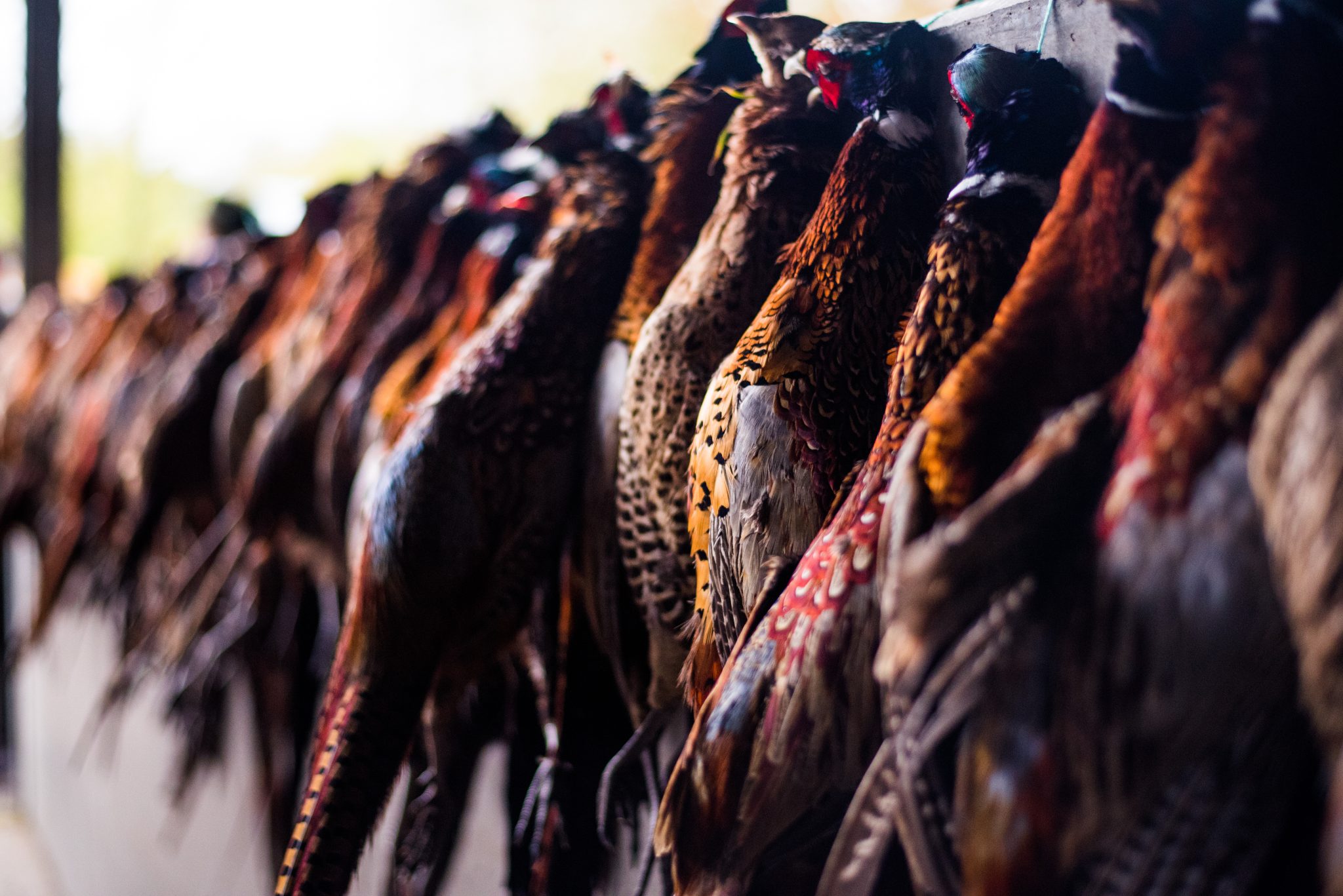Win CENS ProFlex DX5 earplugs worth £1,149 – enter here
How to improve heel work and quartering
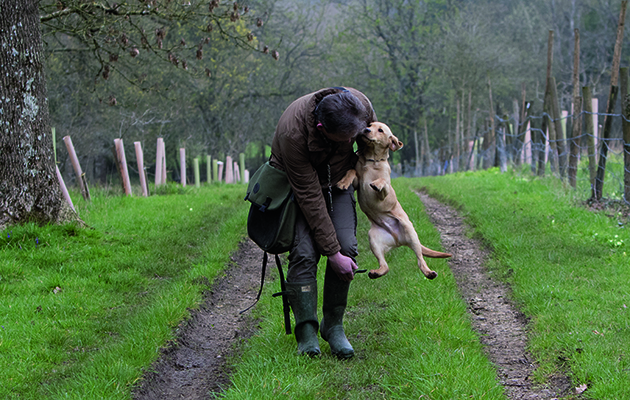
During the past month Remy, the Labrador puppy, has been coming along really well with his lead work, and over the past week or so I have gently started to introduce some more formal heel work but this has not been without its challenges. To encourage the little dog to follow me on the lead I tapped my leg and, for most of the time, this technique worked quite well. But then Remy decided it would be great fun to start jumping up and down like a kangaroo so it was time to try another method.
Meanwhile, the two young spaniels, Dolly and Logan, have been coming on in leaps and bounds and it is now time to try to start to put a few separate aspects of their training together.
Walk to heel
First of all, I had to identify the cause of the problem, and in this case it was noticeable that when I tried to do some heel work in an open area, Remy would tend to pull out to the left. Then, when I encouraged him back in to me with a tap on the leg, he decided to jump up at me. Initially, I tried to tap lower down my leg, but this really didn’t work so I decided to use one of the fence lines at the Twistmount training ground.
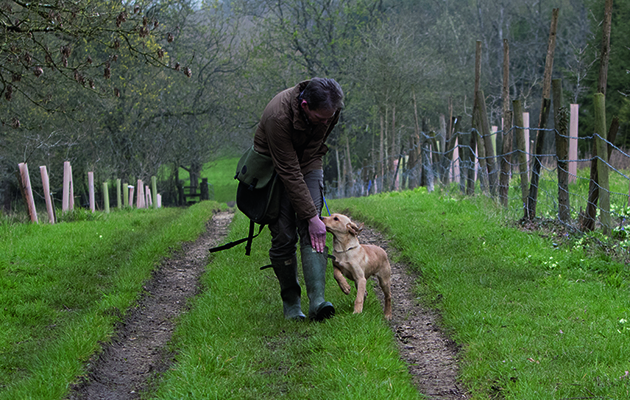
At first Neil tapped his leg to encourage Remy to walk to heel, but then the puppy started to jump up and down
Almost immediately Remy stopped his jumping about and took up a nice position next to my left leg. By limiting his ability to pull out to the left and by using my leg to “funnel” him along the fence, he quickly got the idea.
I will continue to use my hand to encourage him along, but over the coming weeks I shall continue with this exercise until it becomes second nature to him. This technique is very much a hands-off approach and, rather than keep snatching at the lead and keep pulling the dog back, this way I can gradually build up his confidence and condition him to walk nicely by my side with minimal pressure.
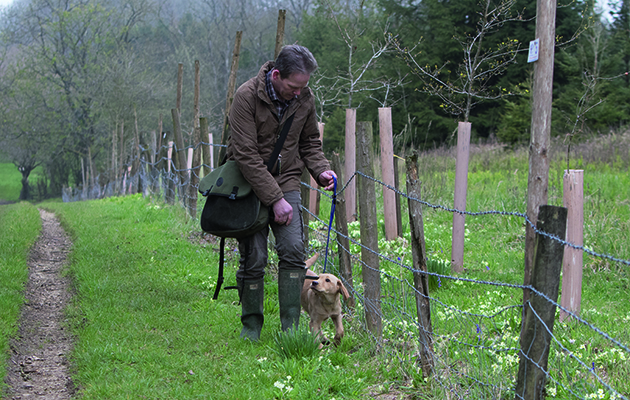
Neil uses his left leg to “funnel” the puppy along the fence line, and Remy soon stops jumping about. Remy picks up the idea quickly and Neil continues with the exercise until it becomes second nature
Labrador retrieving
My future plans for Remy are that he will join my picking-up team, so I spend quite a lot of time on developing his retrieving skills and experience. Though these sessions are being kept very short because I don’t want to bore him, I am now beginning to throw tennis balls into slightly thicker cover and his tenacity in trying to find the retrieve is encouraging.
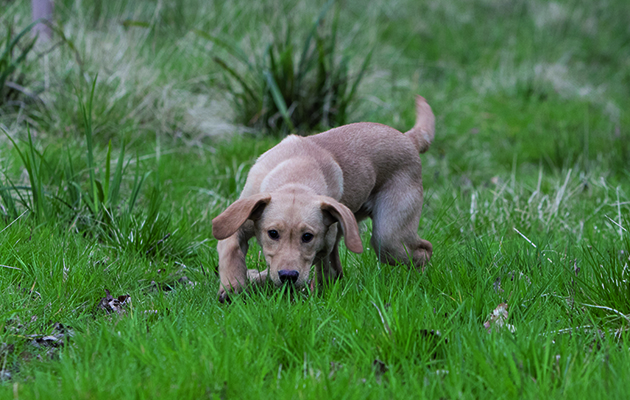
Remy is developing a lovely nose-down style but he has a tendency to run off
He is developing a lovely nose-down style and, rather than looking for and seeing the ball, he is now having to work a bit harder. I always make sure he is successful and if he is struggling, I will just drop another ball in the area so he will find it.
One problem I am having with Remy is that on occasions he decides it would be fun to run off and do a few circuits before coming back to me, so this is something I will be working on over the next few weeks, as I don’t want this to develop into a habit. I may even consider using a place board to help me.
Putting the training together
To get the spaniel puppies hunting well, I have been hiding tennis balls in rough grass. This has encouraged the dogs to hunt nice and close to me but their quartering patterns have been a bit random and I want to develop a nice side- to-side hunting style. To do this, it is time to introduce the turn whistle.
There are lots of different ways of introducing what is normally a double “peep” of your chosen whistle. I like to use a metal, silent whistle — though it is not really totally silent, but very quiet. Some spaniel handlers prefer to use a 210.5 Acme whistle; it is simply a matter of choice.
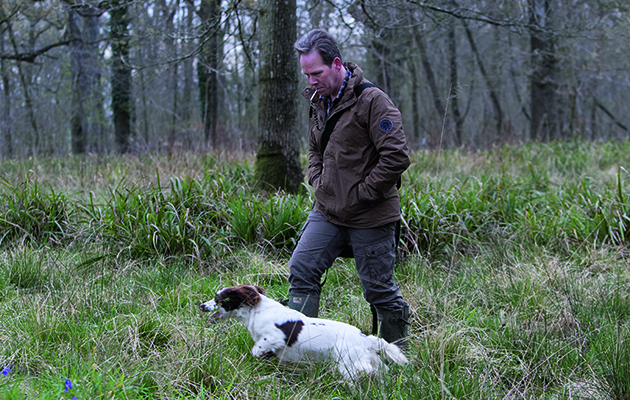
Once you have placed the tennis balls, hunt your young dog down the middle of the line of balls
I start out by hiding tennis balls in rough grass, spaced out roughly 5m either side of where I will walk. I put out quite a few; you don’t have to be too exact. Get the dog and start hunting it down the middle of the line of balls.
I keep my hands in my pockets so that the dog doesn’t keep looking at me in anticipation of me throwing something for it. I will give a couple of “peeps” on the whistle and turn my body away from the dog. This will encourage him to come across me and, bang, he finds a ball. It doesn’t take long for a dog to realise that when he hears the turn whistle and comes back across you, he will find something. Once again, at this stage, success is the key. Over time, you can extend the distance that you hide the balls so that the dog goes a bit longer before finding something.
Spaniel retrieving
The spaniel puppies are a bit older than Remy and I am starting to formalise certain aspects of their training. I have been working on my little bitch Dolly’s delivery. From the beginning, when coming back into me she likes to stand up for the occasional stroke and I have now used this habit when I want her to give me the dummy.
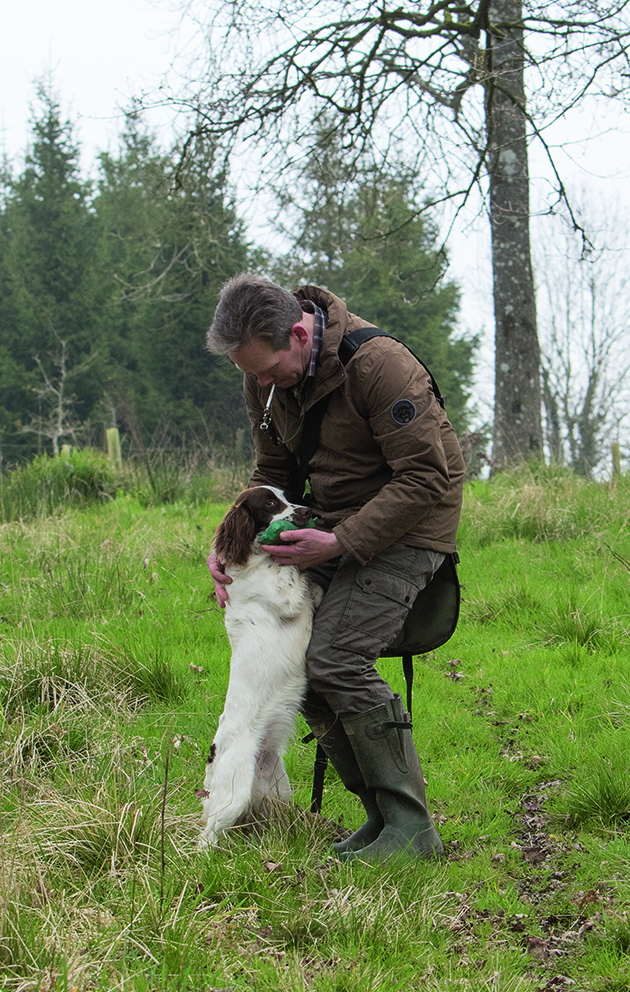
Dolly the young spaniel likes to stand up to have a stroke, so Neil uses this habit in the retrieve
Not everyone likes a dog jumping up at them, but I have found that she is less likely to spit out or drop the dummy. However, I have also been encouraging her to sit to make her delivery and I do this by simply crouching down and letting her settle. I will use my left hand to stroke gently under her chin and chest and I am never in a hurry to take away the retrieve.
She has learned this lesson very quickly and I am sure it is because I never made an issue of her standing up. I have managed to use this to build up her confidence.
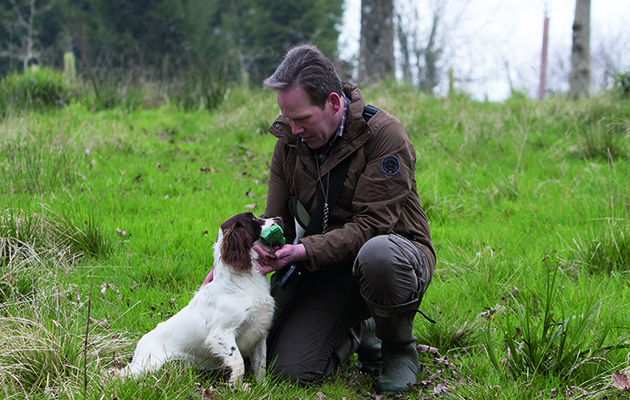
By crouching Neil encourages Dolly to sit to make her delivery and doesn’t rush to take the retrieve
Logan, the black-and-white spaniel, is becoming a really keen retriever so I have started to introduce some basic obstacles for him to deal with. Many handlers think that obstacles have to be fences or gates, but these can put a lot of physical pressure on a young dog, so I like to use some of the small ditches we have on the training ground. The young dogs have to get used to going over a barrier and it can throw them off their mark, so they have to use their noses to find the dummy.
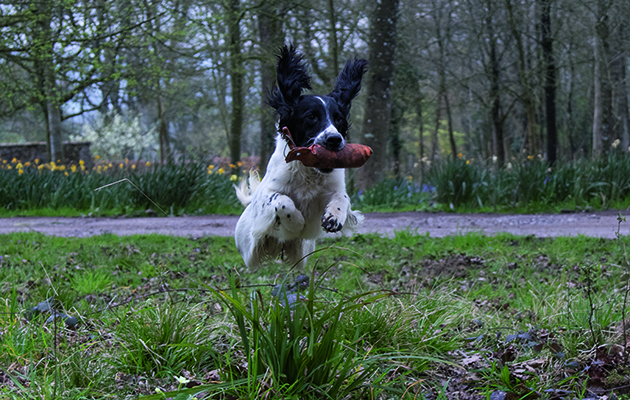
Neil allows Logan to run-in
At this stage I am still letting Logan run-in and he is becoming a very fast and athletic little dog. It is important that you try to create as many different training scenarios as you can and, as these two spaniels approach 12 months old, they can cope both physically and mentally with increasingly difficult scenarios.
Related Articles
Get the latest news delivered direct to your door
Subscribe to Shooting Times & Country
Discover the ultimate companion for field sports enthusiasts with Shooting Times & Country Magazine, the UK’s leading weekly publication that has been at the forefront of shooting culture since 1882. Subscribers gain access to expert tips, comprehensive gear reviews, seasonal advice and a vibrant community of like-minded shooters.
Save on shop price when you subscribe with weekly issues featuring in-depth articles on gundog training, exclusive member offers and access to the digital back issue library. A Shooting Times & Country subscription is more than a magazine, don’t just read about the countryside; immerse yourself in its most authoritative and engaging publication.





